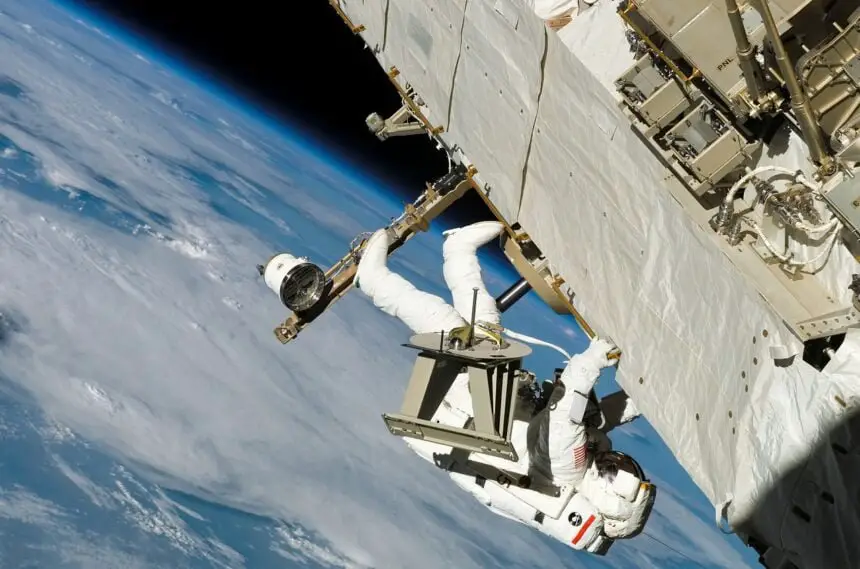Intro.
In September 2021, NASA’s OSIRIS-REx (Origins, Spectral Interpretation, Resource Identification, and Security Regolith Explorer) mission successfully brought a sample of asteroid Bennu back to Earth after a seven-year, 4 billion-mile journey. However, instead of retiring the spacecraft, NASA embarked on a new mission to explore asteroid Apophis. This article will delve into the details of this new mission, now known as OSIRIS-APEX (Origins, Spectral Interpretation, Resource Identification, and Security – Apophis Explorer), and discuss the scientific significance of studying Apophis.
Apophis: A Rare Opportunity
NASA chose Apophis as the destination for the OSIRIS-APEX mission due to its unique characteristics and its close approach to Earth on April 13, 2029. Apophis, an “S-type” asteroid composed of silicate materials and nickel-iron, differs significantly from the carbon-rich “C-type” Bennu.
During its close encounter in 2029, Apophis will come within 20,000 miles (32,000 kilometers) of Earth’s surface. Although there is no risk of impact during this encounter or in the foreseeable future, the proximity of Apophis presents an incredible opportunity for scientific study. This close approach is a rare event, occurring only once every 7,500 years for asteroids of Apophis’ size, which is approximately 367 yards across (about 340 meters).
The OSIRIS-APEX mission aims to study Apophis immediately after its close pass, enabling scientists to observe how its surface changes due to interactions with Earth’s gravity. This encounter will alter Apophis’ orbit and affect the length of its 30.6-hour day. It may also trigger quakes and landslides on the asteroid’s surface, providing insights into its internal structure and composition.
By investigating Apophis, scientists hope to gain a deeper understanding of processes involved in planet formation. Tidal forces and the accumulation of rubble pile material, which OSIRIS-APEX will study during the mission, play crucial roles in the formation of planets and can shed light on the evolution of our solar system.
Moreover, Apophis is representative of many potentially hazardous asteroids, most of which are also S-types. Consequently, the knowledge gained from studying Apophis will contribute to NASA’s planetary defense research, which aims to develop strategies for mitigating potential asteroid impacts.
OSIRIS-APEX: Travel Itinerary
OSIRIS-APEX is expected to arrive at Apophis on April 13, 2029, approximately two weeks before the asteroid’s close encounter with Earth. Leading up to this arrival, the spacecraft’s cameras will capture images of Apophis as it catches up to the asteroid. Earth-based telescopes will also closely observe Apophis during this period. However, Apophis will be too close to the Sun in the sky immediately after the close encounter, making ground-based observations challenging. Therefore, OSIRIS-APEX will be crucial in detecting and analyzing any changes triggered by the close encounter.
During its 18-month proximity to Apophis, OSIRIS-APEX will conduct various scientific investigations similar to those performed during the OSIRIS-REx mission at Bennu. The spacecraft will use its suite of instruments, including imagers, spectrometers, and a laser altimeter, to map the asteroid’s surface and analyze its chemical composition.
In a remarkable maneuver reminiscent of the OSIRIS-REx mission, OSIRIS-APEX will approach within 16 feet of Apophis’ surface and fire its thrusters downward. This action will stir up rocks and dust, allowing scientists to examine the material beneath the asteroid’s surface.
While the rendezvous with Apophis is still several years away, the spacecraft will undergo several close passes to the Sun and utilize gravity assistance from Earth to adjust its trajectory for the April 2029 arrival.
Conclusion
NASA’s decision to rename the OSIRIS-REx spacecraft as OSIRIS-APEX and send it on a new mission to explore asteroid Apophis demonstrates the agency’s commitment to maximizing the scientific potential of its space missions. By taking advantage of Apophis’ close approach to Earth, OSIRIS-APEX will provide valuable insights into the processes involved in planet formation and the composition of asteroids.
The observations and data collected during the OSIRIS-APEX mission will expand our understanding of the solar system’s origins and contribute to NASA’s planetary defense efforts. As the spacecraft embarks on this new journey, scientists and researchers eagerly anticipate the surprises and knowledge that await them.
The OSIRIS-APEX mission is managed by NASA’s Goddard Space Flight Center, with the University of Arizona leading the science team and mission planning. Lockheed Martin Space built the spacecraft, and Goddard and KinetX Aerospace are responsible for navigation. International collaborations include the Canadian Space Agency’s laser altimeter instrument and scientific collaboration with JAXA’s Hayabusa2 mission. OSIRIS-APEX is part of NASA’s New Frontiers Program, managed by NASA’s Marshall Space Flight Center.
In summary, the OSIRIS-APEX mission represents an exciting new chapter in NASA’s exploration of asteroids. By studying asteroid Apophis during its close approach to Earth in 2029, scientists hope to uncover valuable insights into planet formation and improve our understanding of potentially hazardous asteroids. The mission’s findings will contribute to planetary defense research and pave the way for future space exploration endeavors. As OSIRIS-APEX embarks on its journey, the scientific community eagerly anticipates the discoveries that lie ahead.
I’m Angelina and I Am a Writer, I Have Been Article Writing for Five Years, Our Whole Team Writes Articles for This Website and We Follow International Media and Based on That We Write Articles. We Thoroughly Investigate Any News Before Publishing It, Once We Believe the News, We Publish It. Our Team Keeps a Close Watch on Every News and We Follow International Media. We Write Articles Based on All Trending Topics Because We Work Hard for Them.






